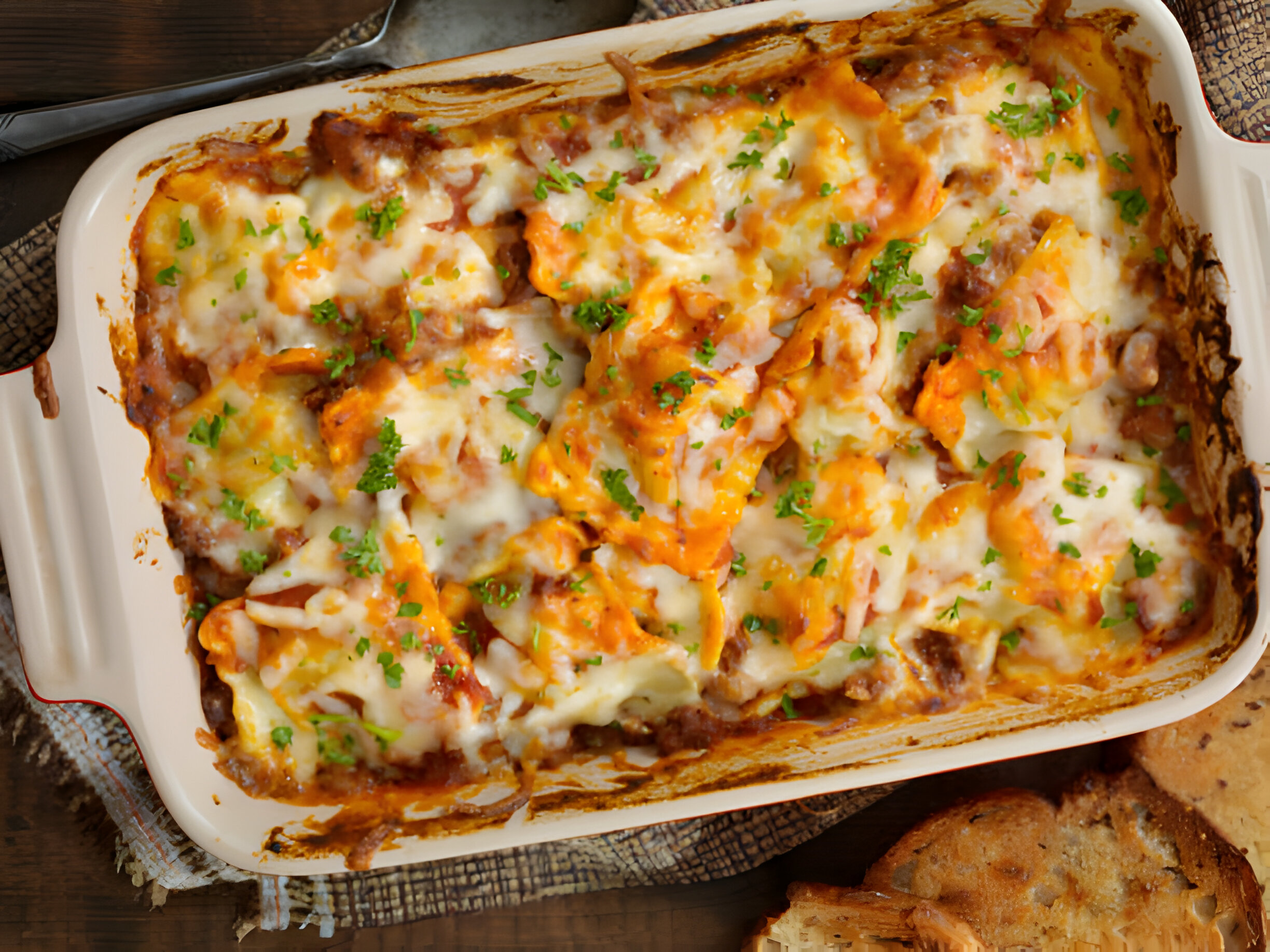Image Credit: GetyImage
Ravioli, a cherished classic in Italian cuisine, serves as a versatile canvas for a plethora of flavorful fillings, ranging from cheese ravioli to meat-packed delights and even sweet concoctions. The art of crafting homemade ravioli might seem daunting at first; however, it offers an unparalleled opportunity to customize your pasta dishes, ensuring a gourmet dining experience right at home. Whether you’re a seasoned chef or a culinary novice, learning how to make ravioli and discovering the perfect ravioli recipe can elevate your cooking game, turning simple meals into memorable feasts.
This article sets out to demystify the process of making ravioli from scratch, starting with the essential steps for preparing the perfect ravioli pasta dough. It will guide readers through selecting and preparing various ravioli filling recipes, from traditional cheese ravioli recipes to more inventive options. The piece also covers the techniques for shaping and cooking ravioli, ensuring those delicate parcels come out perfectly every time. Finally, it will explore the best sauces to pair with ravioli, completing the culinary journey with toasted ravioli tips for those craving a crispy twist. Whether you’re looking to master the basics of homemade ravioli or seeking to impress with sophisticated flavor combinations, this article promises to provide invaluable insights for every occasion.
Making the Pasta Dough
Ingredients
- Flour (00 flour and semolina mix recommended)
- Eggs (5 whole eggs and 3 yolks)
- Olive oil
- Salt
Step-by-Step Process
- Combine Flour and Salt: On a clean surface, mix the flour and salt, then form a mound with a well in the center.
- Add Eggs and Oil: Pour eggs, egg yolks, and olive oil into the well. Using a fork, gradually incorporate the flour into the eggs to form a dough.
- Knead the Dough: Knead for about 10 minutes until the dough is elastic and smooth. If too sticky, add flour; if too dry, add water.
- Rest the Dough: Wrap the dough in plastic wrap and let it rest for 30 minutes at room temperature.
Tips for Perfect Dough
- Work Surface Setup: Ensure all tools and surfaces are ready before starting.
- Handling the Dough: Work with small portions of dough to maintain control and prevent drying.
- Thickness: Aim for a thin dough, about 1/8-inch thick, to ensure delicate, even ravioli.
- Air Pockets: Carefully press out air pockets between the layers to avoid bubbles and ensure proper sealing.
Filling for Ravioli
Popular Fillings
Ravioli fillings can range from simple cheese combinations to more elaborate meat and seafood concoctions. Classic choices include a blend of ricotta, Parmesan, mozzarella, and provolone cheeses, often enhanced with parsley, salt, and pepper. For meat lovers, a mixture of browned beef, veal, and spinach, seasoned with nutmeg and mixed with eggs and cheese, offers a hearty option. Seafood enthusiasts might enjoy fillings like prawn or crab, while adventurous palates can explore fillings like ‘nduja or burrata, each lending a unique flavor profile to the ravioli.
How to Prepare the Filling
To prepare the filling, start by selecting your desired ingredients based on the type of ravioli you wish to create. For cheese fillings, mix cheeses like ricotta, mozzarella, and Parmesan with an egg to bind the ingredients. Meat fillings require cooking the meats thoroughly before combining with spices and other additives like eggs and cheese. Ensure all ingredients are cooled before stuffing to prevent tearing the pasta. For a smooth consistency and richer flavor, some recipes recommend blending the filling ingredients until they achieve a creamy texture.
Shaping and Cooking Ravioli
- Shaping Techniques: Begin by placing a dollop of cheese filling on a pasta sheet, spaced adequately. Cover with another sheet, pressing around the filling to expel air and seal the edges. Cut into desired shapes, ensuring no pasta scraps are wasted.
- Cooking Instructions: Cook the shaped ravioli in boiling, salted water. Start with a test batch to determine the appropriate cooking time, which generally ranges from 3-6 minutes depending on thickness. Use a slotted spoon for handling to avoid breakage.
- Storing and Freezing Tips: For immediate use, store at room temperature under a covered sheet pan for up to one hour. For longer storage, refrigerate for up to four hours without risking discoloration or sogginess. Freeze on a tray before transferring to an airtight container for up to a month. Cook directly from frozen, adjusting cooking time as necessary.
Best Sauces to Pair with Ravioli
Simple Sauces
For those who prefer a lighter touch, a drizzle of olive oil enhanced with parmesan, salt, and black pepper offers a quick yet flavorful option. Alternatively, a classic marinara sauce made from fresh tomatoes and herbs pairs beautifully with both cheese and meat ravioli, embodying the essence of Italian simplicity.
Complex Sauces
For a more decadent experience, the creamy six-cheese sauce, blending cream cheese and Parmesan with a base of butter, garlic, and flour, complements cheese ravioli exquisitely. Another sophisticated choice is the sun-dried tomato cream sauce, rich in herbs and perfect for enhancing the flavors of any ravioli.
Complementary Side Dishes
To balance the richness of ravioli and sauce, a fresh green salad or a Caprese salad serves as the perfect accompaniment, providing a crisp contrast to the soft, savory pasta. These side dishes not only add a refreshing element but also complete the meal, making it suitable for a multi-course Italian dinner.
Conclusion
Through the journey of this article, we’ve navigated the intricate process of crafting homemade ravioli, offering insights into everything from creating the perfect pasta dough to exploring a variety of fillings that cater to every palate. We detailed the steps for shaping and cooking ravioli to perfection, paired with suggestions for sauces and side dishes to complete the dining experience. The guidance provided aims to not only demystify the art of making ravioli from scratch but also to inspire confidence in cooks of all skill levels to experiment with their culinary creations, making each meal a crafted celebration of flavors.
The significance of homemade ravioli extends beyond the dinner plate; it’s a venture into the heart of Italian cuisine, allowing anyone to bring a touch of Italy into their kitchen. By understanding the fundamental techniques and embracing the diverse possibilities for fillings and sauces, anyone can elevate their cooking repertoire. As we conclude, let us remember that the true joy of cooking lies in the journey of discovery, the satisfaction of hands-on creation, and the pleasure of sharing lovingly prepared meals with others. Whether for a special occasion or a delightful everyday meal, homemade ravioli promises a fulfilling and deliciously gourmet adventure.
FAQs
1. Can I prepare ravioli in advance?
Yes, you can definitely prepare ahead of time. In fact, it’s often advisable to make your filled pastas days or even weeks before you plan to serve them. This can be particularly helpful when cooking for gatherings, as it reduces stress and fatigue on the day of the event.
2. How many ravioli should I serve per guest?
A good serving size is at least 200 grams of ravioli per person, which is roughly about 10 pieces. However, for a more generous portion, you might consider serving up to 250 grams, or at least 12 per person.
3. What ingredients can enhance the flavor of ravioli?
To improve the taste of ravioli, consider adding seasonings such as dried oregano, cayenne, garlic powder, and chili powder. Mix these spices into the pasta before heating it. After mixing, taste the ravioli and adjust the seasoning as needed to suit your preference.
4. What is the traditional filling for ravioli?
Fillings vary widely by region, but in places like Rome and Latium, the traditional filling includes ricotta cheese, spinach, nutmeg, and black pepper.




